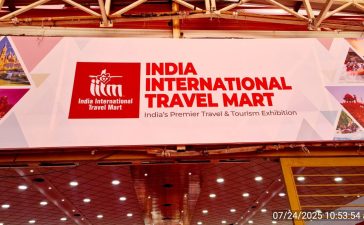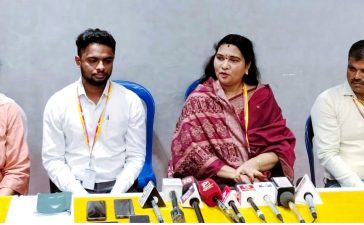“Empowering Women & Youth: How a 7-Month Campaign Changed Health Awareness”
Initiative Reaches Over 7.5 Lakh People, Tackling Iodine Deficiency Through Education and Innovation
Bengaluru, June 2025 – In just seven months, the Aashirvaad Smart India Program has made significant strides in combating iodine deficiency disorders (IDD) and promoting healthy eating habits across Karnataka, Andhra Pradesh, and Telangana. Launched in October 2024 by ITC Ltd in collaboration with the Institute of Global Development, the initiative has successfully empowered more than 7.5 lakh individuals, including pregnant and lactating women, adolescent girls, and boys, through innovative community engagement and education.
RSVP For Media Updates: 93531 21474 [WhatsApp]
A Multi-Pronged Approach to Nutrition Awareness
The program adopted a comprehensive strategy, blending grassroots outreach with technology to ensure lasting behavioral change. Key interventions included:
-
Flipbook-Led Education Sessions: Over 1,100 trained facilitators conducted interactive sessions using visually engaging flipbooks, simplifying complex nutrition concepts and debunking myths around iodine intake.
-
Cultural Outreach Through Street Plays: More than 1,100 street plays, tailored to local traditions, effectively communicated health messages in an engaging manner.
-
Poshan Melas for Hands-On Learning: 244 nutrition fairs featured live cooking demonstrations and participatory activities, reinforcing the importance of balanced diets.
-
School-Based Initiatives: The program reached young students through 67 interactive sessions, 42 educational wall paintings, and 48 smart boards installed in schools. Science-based demonstrations helped students identify iodized salt and understand its role in daily nutrition.
Empowering Frontline Workers and Leveraging Technology
To sustain impact, the initiative focused on capacity building and digital outreach:
-
Training for Community Champions: 5,462 frontline workers were trained across 33 sessions, equipping them to advocate for better nutrition within their communities.
-
Tech-Driven Reinforcement: Pre-recorded audio messages reached over 48,000 individuals, while SMS campaigns delivered key health reminders to 39,000 more, ensuring continuous engagement beyond physical sessions.
National Recognition and Media Amplification
The program’s success was recognized at a national conference in Belagavi, Karnataka. Additionally, 30 dedicated TV shows on leading Kannada and Telugu news channels amplified its reach, engaging nearly 8 lakh viewers with success stories and expert insights.
A Commitment to Lasting Change
Dr. Agatha Betsy, Lead, Nutrition Sciences at ITC Limited, highlighted the initiative’s impact: “The Aashirvaad Smart India Program reaffirms our belief that strong collaborations and community-centric approaches can drive meaningful change in India’s health landscape. By addressing misconceptions and equipping stakeholders with knowledge, we’ve empowered lakhs to make informed dietary choices. True progress lies in communities becoming proactive about their nutrition—and we’re proud to support this transformation.”
With its scalable model and measurable outcomes, the program sets a benchmark for public-private partnerships in nutrition advocacy, paving the way for healthier futures across India.
Key Quotes:
-
Dr. Agatha Betsy, ITC Limited:
“When communities own their health journey, real change happens. This program proves that education and local engagement can turn awareness into action.” -
Community Health Worker, Karnataka:
“Earlier, families hesitated to use iodized salt. Now, after the flipbook sessions and street plays, they demand it. That’s the power of grassroots education.” -
School Principal, Telangana:
“The smart boards and wall paintings made nutrition lessons fun for students. They’re now the ‘iodine ambassadors’ in their homes!” -
Participant, Poshan Mela (Andhra Pradesh):
“I never knew iodine deficiency could affect my child’s brain. The live cooking demo showed me how simple dietary changes can make a big difference.”
![]()











